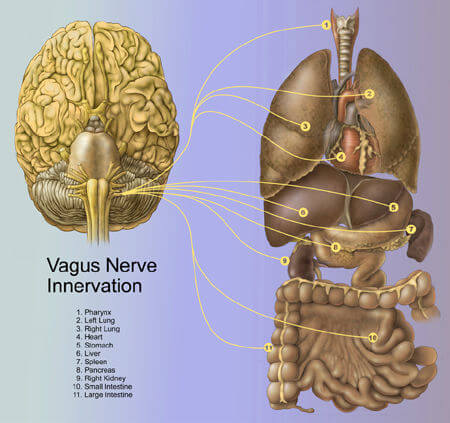Revolutionary Therapy Gives a Man in a Coma his Consciousness Back


Written and verified by psychologist Valeria Sabater
When a person regains consciousness after years of being in a coma, it’s almost always news.
However, what occurred not long ago in a hospital in France has a special component from a scientific point of view. Without a doubt, it gives many patients in the same situation hope.
The development took place at the Pierre Wherteimer Neurological Hospital in Lyon (France). We say “development” because it wasn’t spontaneous or casual.
Our fortunate protagonist is 50 years old, and had been in a coma since he was 35 after a serious car accident that left him crippled.
The University of Lyon, next to this same hospital, carried out an interesting study based on the simple stimulation of the vagus nerve.
However, it was a slow process. Even today, they’re waiting on more achievements and advances. Also, the patient is still dealing with serious consequences, and his waking up is slow.
However, he is already reacting to different stimuli, is paying attention, focusing his gaze and can direct his head towards things that interest him.
It’s just a start, but it’s the first phase. It’s also the first steps of an advancement that, without a doubt, will soon bring amazing news.
Let’s analyze what the therapy is based on. It was developed by a top team of doctors, led by a researcher at the Institute of Cognitive Sciences, Marc Jeannerod.
Regaining consciousness after 15 years

If there’s anything that psychologists and psychiatrists tells us all the time, it’s that nothing is as enigmatic as explaining what consciousness actually is.
However, people who have a loved one in a coma know perfectly well that it’s a strange state between life and death. They keep their vital signs. However, they’re left in a world far away and lose their notion of humanity.
However, you should remember that this thread or this neuron activity limits consciousness is often quite fragile. This has been the challenge of many scientists: bring the sensitive, real and close world to the person who is in a vegetative state.
The vagus nerve, the key to “waking up”
The work was published in the magazine Current Biology recently. However, the news has already made it around the world.
Scientists, for their part, ask for caution. After all, at the moment, there has only been one patient subjected to this therapy. It’s still necessary to try it with more people with different brain damage to truly assess its abilities.
The therapy is based around the vagus nerve. The treatment itself is based around the application of small pacemakers around the patient’s vagus nerve.
Remember, the vagus nerve connects an infinite amount of nerves, organs and structures to our brain. It’s like a channel through which infinite functions are connected. This “active” nerve drives or conditions towards one type of response or another.
What the scientists did in this case was also stimulate a specific area that connects with the vagus nerve: the reticular formation.
This is a fascinating structure in charge of regulating our sleeping and vigil states, among other things.

This was the premise that the team of neurologists started from: if they stimulated the vagus nerve, would it cause a return of consciousness in the patients in a coma?
The result was slow, but effective. The first person that the pacemakers was tried on awoke after 15 years immersed in their unconscious world.
More studies are needed
The scientific community’s response in general is to be cautious. The technique of stimulating the vagus nerve itself is nothing new. In fact, it has been used for a while in people with epilepsy as well as in cases of severe depression.
What it does is “reactivates” the conscious and the activity of many of our organs. However, this activation is very slow: from there, the therapy needs to keep being worked on.
Also, although a patient in a coma has woken up, he still is not autonomous or with the ability to interact with his environment.
The patient is conscious, this is true. He’s awake, there is no doubt. However, he still can’t communicate nor is there any evidence that he understands the situation that he’s in.
The only activity that he has shown until now is limited to his gaze: something grabs his attention, he looks, observes it and he seems to have a special interest in his family reading things.

As we said, it’s very difficult to explain precisely what consciousness is. It has, without a doubt, different steps and distinct levels. Because of this, this patient is still on the first step.
He’s still missing a few steps before he can fully wake up, be able to communicate and authentically connect with his environment.
We hope that with time and adequate stimulation, he will be able to.
Meanwhile, we will being waiting for more news about the vagus nerve therapy in patients in comas.
All cited sources were thoroughly reviewed by our team to ensure their quality, reliability, currency, and validity. The bibliography of this article was considered reliable and of academic or scientific accuracy.
- Teasdale, G., & Jennett, B. (1974). ASSESSMENT OF COMA AND IMPAIRED CONSCIOUSNESS. A Practical Scale. The Lancet. https://doi.org/10.1016/S0140-6736(74)91639-0
- Laureys, S., Owen, A. M., & Schiff, N. D. (2004). Brain function in coma, vegetative state, and related disorders. Lancet Neurology. https://doi.org/10.1016/S1474-4422(04)00852-X
- Tshibanda, L., Vanhaudenhuyse, A., Boly, M., Soddu, A., Bruno, M. A., Moonen, G., … Noirhomme, Q. (2010). Neuroimaging after coma. Neuroradiology. https://doi.org/10.1007/s00234-009-0614-8
This text is provided for informational purposes only and does not replace consultation with a professional. If in doubt, consult your specialist.








